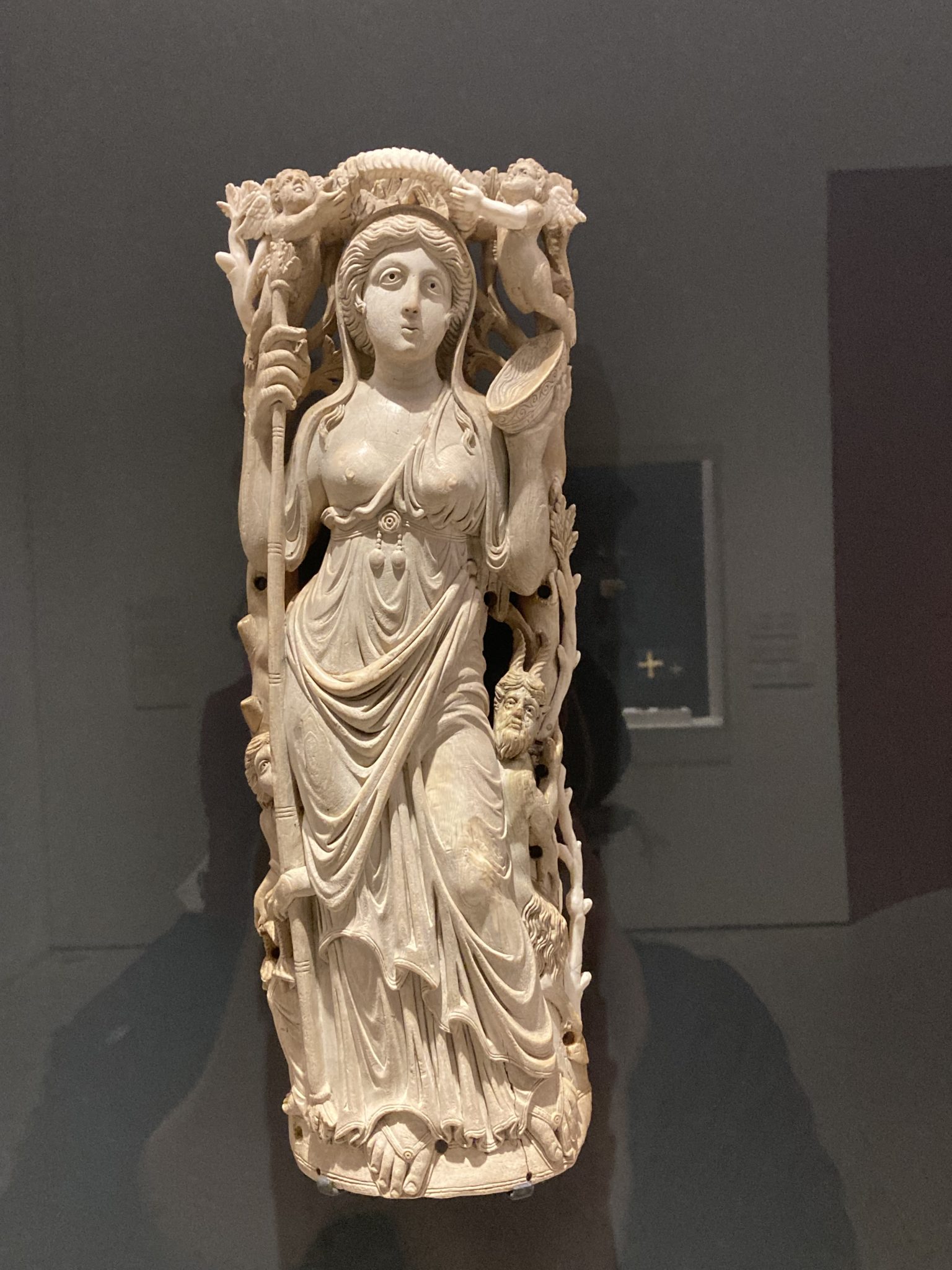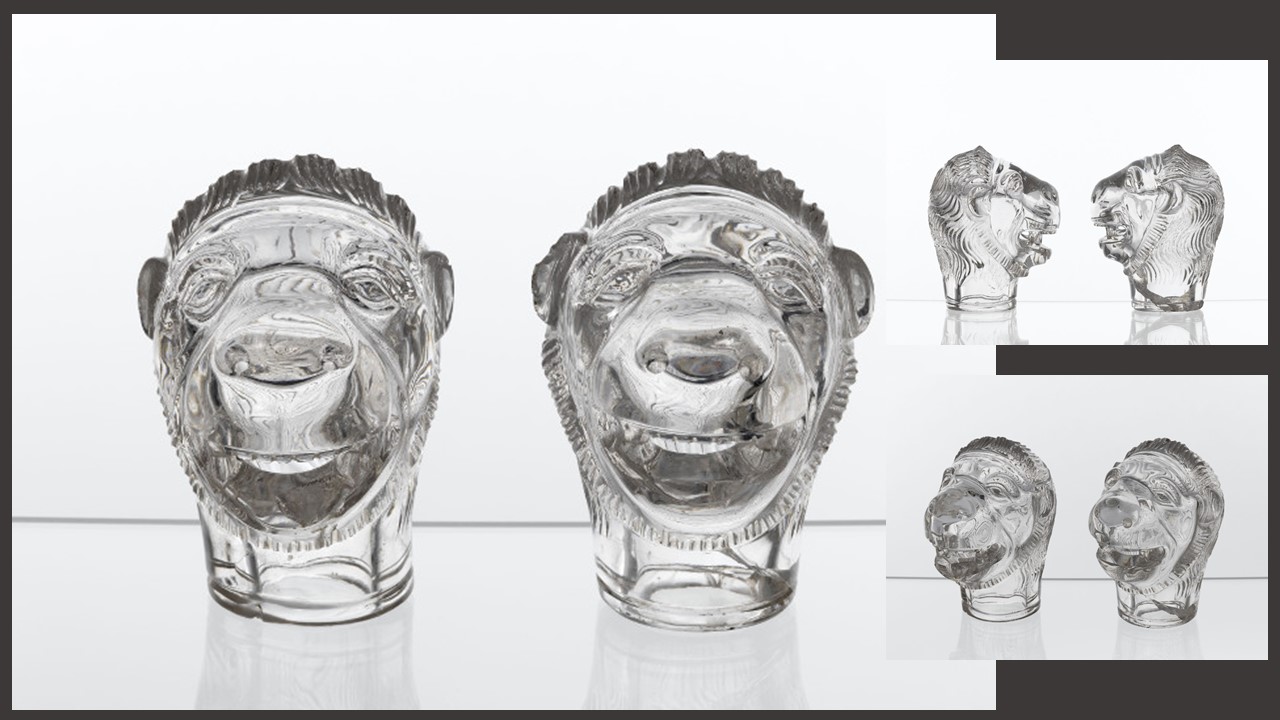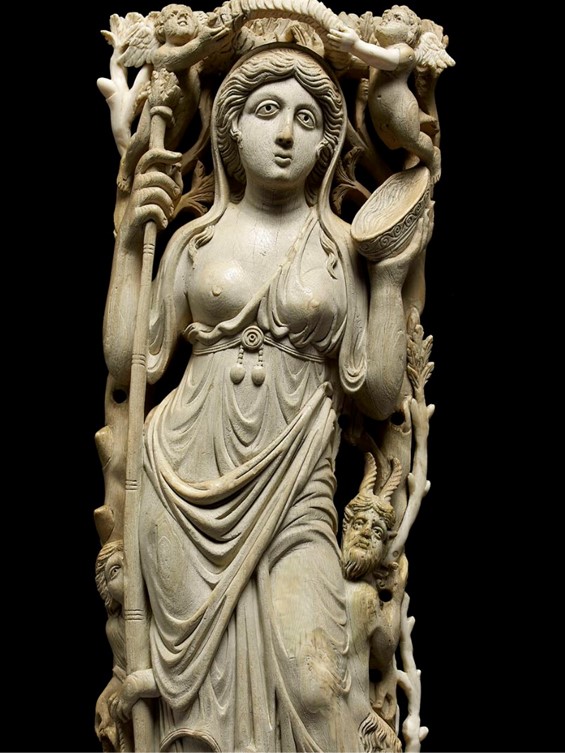
In the Cretan Labyrinth built by Daedalus, King Minos walled up the twin form of bull and man, the Minotaur, and twice nourished it on Athenian blood, but the third repetition of the nine-year tribute by lot, caused the monster’s downfall. When, through the help of the virgin princess, Ariadne, by rewinding the thread, Theseus, son of Aegeus, won his way back to the elusive threshold, that no one had previously regained, he immediately set sail for Dia, stealing the daughter of Minos away with him, then cruelly abandoned his companion on that shore. Deserted and weeping bitterly, as she was, Bacchus-Liber brought her help and comfort. So that she might shine among the eternal stars, he took the crown from her forehead and set it in the sky. It soared through the rarefied air, and as it soared its jewels changed to bright fires, and took their place, retaining the appearance of a crown, as the Corona Borealis, between the kneeling Hercules and the head of the serpent that Ophiuchus holds. This is how Ovid presents one of my favourite Greek Myths, that of Theseus, Ariadne, and Dionysus. At Cluny vis-à-vis Ariadne, an early Byzantine ivory relief carving, I am astonished at how powerful her story is through the ages! https://www.poetryintranslation.com/PITBR/Latin/Metamorph8.php#anchor_Toc64106496
For thousands of years elephant tusks, the amazing cream-coloured ivory, were used as a carving material by humans to create small scale masterpieces… boxes, manuscript covers, precious fittings for furniture, jewelry, even sculptural pieces. During the Byzantine Empire, Constantinople emerged as a prominent center for ivory carving and became a hub for the production of highly valued and sought-after sophisticated ivory artworks.
Skilled artisans crafted exquisite ivory carvings using techniques such as relief carving and sculpting. These carvings were highly prized for their intricate details, delicate craftsmanship, and symbolic imagery. Ivory carvings from Constantinople showcased a variety of subjects, including religious scenes, mythological figures, portraits of emperors and aristocrats, and decorative motifs.
At the Cluny Museum, the French Musée National du Moyen Âge in Paris, I sought out the famous Byzantine ivory piece of Ariadne, Maenad, Satyr, and Cupids. Most likely a decorative element of a piece of furniture, this elephant ivory statuette made in Constantinople in the early 6th century was found in a tomb in the Rhine valley, in the region of Trier, along with two lion heads in rock crystal.

https://twitter.com/DocCrom/status/1420002777334439936/photo/3
The central figure of the composition, Ariadne, stands frontally in a contrapposto position, holding a thyrsus in her right hand and a bowl in her left, and she is crowned with a wreath by two cupids. She is looking majestic, dressed in a high-girt chiton that falls open to expose her right breast. Around her waist hangs a mantle and over her head is a veil. On the right side is a small figure of Pan. On the left, a small female figure, a maenad, wraps one arm around the bottom part of the thyrsus while holding what appears to be two small bells or castanets connected by a cord. It is important to note that the style of the relief, particularly the fine rendering of drapery, the wide-open eyes of the woman, and its classicizing themes points to high-end ivory carving typically found in Constantinople or Alexandria around the beginning of the sixth century AD. https://inpress.lib.uiowa.edu/feminae/DetailsPage.aspx?Feminae_ID=31952 and https://www.metmuseum.org/art/metpublications/Age_of_Spirituality_Late_Antique_and_Early_Christian_Art_Third_to_Seventh_Century pages 148-149

The ivory relief of Ariadne at the Cluny came from a tomb in the region of Trier, in Germany. It was, in most probability, part of the revetment of a luxury throne, that also included the unique rock-crystal lion heads exhibited in the Cluny Museum, and reputed to have been found together. One can only imagine the sumptuousness of the Trier throne! The use of precious materials, ivory, and rock crystal, for such a unique piece of furniture, and the virtuosity of craftmanship, makes it a singular 6th-century AD creation. If we compare it to the throne depicted on the diptych sheet of the consul Areobindus (in the Cluny as well) we can only marvel at the abundance and splendor of the time.
For a Student Activity, please… Check HERE!